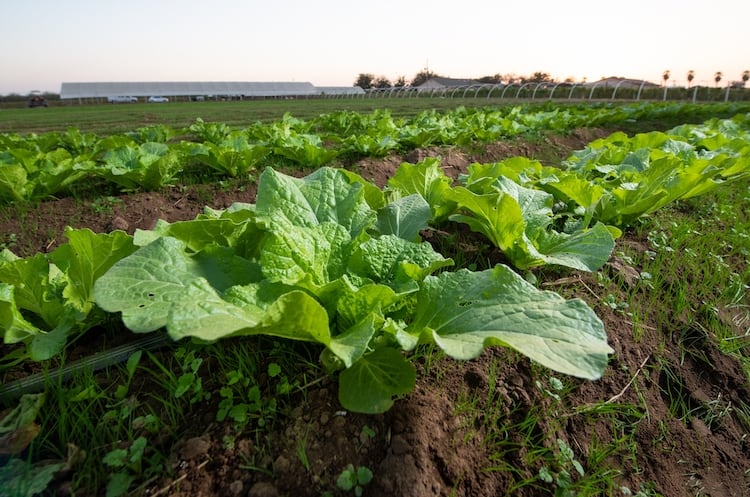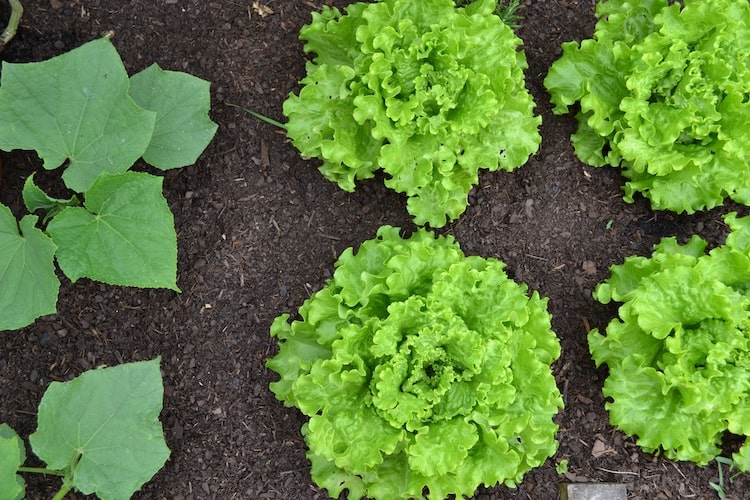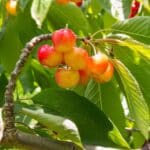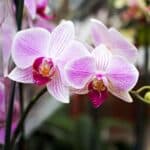If you have always wanted to know when to plant mustard greens, then this article is for you.
Mustard greens are fast-growing, highly beneficial leafy greens. Planting these spicy greens is an excellent addition to your healthy diet because of its nutritional contents and benefits.
A cup of mustard greens increases your daily recommended vitamin K intake to about 500%, which supports health-related ailments.
Mustard greens can be grown in various mediums; they are a perfect fit in your containers or gardens. Mustard is a cool-season green which can tolerate light frost, and this makes their leaves sweeter. Besides its health benefits, mustard greens are a great side dish.
That said, the best time to plant mustard greens is during cold temperatures of fall and spring.
Read on to find out other things you need to grow mustard greens successfully.
Read Also: What Not to Plant With Kale
Table of Contents
Choosing The Type of Mustard Green to Plant
There are different varieties of mustard greens, namely;
- White mustard (Brassica alba) – This is a mild type of mustard. B. alba yields seeds that are perfect for mustards, and preserved produce (e.g., pickles, relishes, chutneys).
- Black mustard (Brassica nigra) – B. nigra is normally grown for its seeds. However, the leaves are edible, and they serve as the foundation of many spicy types of mustard, like Dijon.
- Brown mustard (Brassica juncea) – This type of mustard has a wasabi-like bite. Many curries and hot mustards contain the spicy greens and seeds of B. juncea.
All the options above are easy to try out, but if you are a new grower and you are not sure which to pick, opt-in for the brown mustard variety; they are the top seed and leave producing a variant of these healthy greens.
When to Plant Mustard Greens
Having gone through the types of mustard greens to plant, let's now look at when to plant mustard greens:
Mustard greens are cool loving plants that can withstand light frost, so it is best to plant them during the cold temperatures of fall and spring.
These spicy greens thrive well in gardens, raised beds, and containers.
If you're growing mustard for its greens its best to plant around the late summer, this time is often better for the production of green leaves.
Contrary, planting for seed productions, its best to plant fall seeds in the spring because the high and dry temperatures that come with summer causes seed production and bolting to occur.
Whereas for indoor planting, you can grow mustard at any time of the year.
It's best to plant mustard greens early so that they can reach maturity before temperature average more significant than 75°F.
So the best time is to sow mustard green during early winter or in mild autumn regions.
Although they can tolerate light frost, the seeds may be slow to germinate if the soil is too cold, 40°F or less.
So, for every 4 to 6 weeks, start planting by sowing about six seeds of succession crops per Rockwool cube.
Mustard green requires about 30 to 40 days to reach full harvest. However, it is swift to germinate.
So, all things equal under the right growing conditions, it may start to develop in just one or two days. As soon as it does, give it lots of light to prevent weak, leggy growth.
Sow mustard as early as 4 to 6 weeks before the average last frost date in spring.
Mustard requires 30 to 40 days to reach harvest.
Read Also: When to Harvest Turnip Greens
Growing Mustard Greens – a quick guide to increasing mustard greens
Space plants six to eight inches apart in an area that receives full to partial sun and has well-drained and fertile soil with a pH of 6.5 to 6.8 while maintaining a soil temperature of about 40% Fahrenheit.
Improve the natural soil by spreading 2- to 4-inch layer compost or other rich organic matter over the whole area and then shove and smoothen it in with a shovel.
Ensure to water the seeds well and keep the soil consistently moist under the right watering conditions.
Mustard greens can sprout out within four to seven days and produce edible leaves quickly in no time.
Always check soil moisture using a soil moisture meter regularly and water when the top layer of the soil indicates dryness.
After sowing, it is best practice to encourage more leaf production by continually feeding the plants soil with water-soluble plant foods.
Once your mustard seedlings have attained a height of about 3 inches tall and have roots protruding from the Rockwool cube, it's time to transplant.
Harvesting and Storing Mustard Greens
Mustard greens are fast growers, and they can be ready to harvest within 40 days of sowing.
There are two renowned methods used in harvesting greens.
You may fingerpick only the large, outer leaves, leaving the center to continue growing and producing more greens.
Or you can use the simplified harvesting approach called the cut-and-come method, cutting all the leaves to 3 to 4 inches from the ground and leaving the remnant to re-grow.
This method allows the plant to keep growing and yielding additional produce in months.
Here's how the cut and go method works
Using a sharp knife or gardening scissors, cut the bottommost leaves about 3 to 4 inches away from the base.
Frequently return to harvest more and encourage new growth.
Read Also: When to Grow Okra in Arkansas
Mustard Greens Planting Season | Conclusion
If you are an adventurous garden cook who wants to experience natural condiments and spices at their best, then the mustard green is your little green friend.
Their different species allow you to form different cooking recipes while enjoying all the nutritious benefits they have to offer.
We hope after reading this guide on when to plant mustard seeds, you won't let the next cool season pass by without growing these spicy and tasty greens.







Leave a Reply